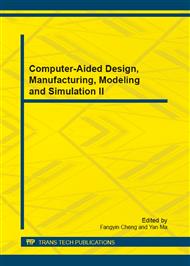p.43
p.47
p.52
p.57
p.62
p.66
p.71
p.78
p.84
Study on the Lifting Weight Detection of Tower Crane
Abstract:
To build the tower crane monitoring system is so important because of the accidents increasing in construction industry. Utilizing lifting weight ring to detect the goods weight is a reasonable way in such a system. Ring size should be considered in the situation to lift different weight goods. Through the definitions of two rings of the smaller and the bigger, the detected weight curves are explored. Through the simulation of tower crane operation, lifting weight curves are obtained and analyzed in different stages of starting, transmitting and ending. The experiments demonstrated that different weight level of goods should select the different size ring, and the detected weight data has its own attributes in different stages.
Info:
Periodical:
Pages:
62-65
Citation:
Online since:
December 2012
Authors:
Keywords:
Price:
Сopyright:
© 2013 Trans Tech Publications Ltd. All Rights Reserved
Share:
Citation:


